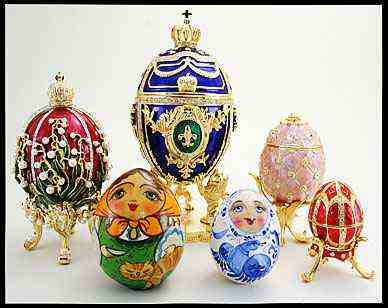That’s what one of my housemates said about Easter eggs painted by little children. Hahaha. I mean… it’s probably going to be true for a lot of eggs decorated by kids, but in their case, they think it’s beautiful so it’s the thought and effort on their part that counts, I guess.
We were just joking around but it made me think– what is the story behind the Easter egg? Why do we do it at all? For the Russians, the Easter egg was a huge deal and the Tsars were known for commissioning elaborate eggs created of precious metals and expensive jewels to give as presents to their family members during this Christian holiday (see picture below).

Given Russia’s predominantly orthodox Christian tradition, I should have presumed that there was a historical, religious reasoning behind the existence of Easter eggs, but I never actually processed this line of thought to go that far. It was only when I looked it up on Wikipedia that I learned of the religious background to this timeless tradition.
In short, the egg itself was always seen as a symbol of life (given that chicks hatch from them). Zoroastrians used to paint eggs for one of their gods, and the egg was used in several other religions ceremonies as well, in Judaim, Paganism, etc. When Christianity became the dominant religion in Europe, many of the cultural traditions of different people groups were combined, and hence forth existed the Easter egg.
In Christianity, the Easter egg represents the rebirth of Christ and the shape of the egg itself resembles a grave. Especially in Eastern European and Russian customs, the Easter egg was always a constant symbol for new life and was widely decorated and given out as gestures of love and friendship.
Now, the act has become, especially in America, a popular fun-time activity for children during this spring season, so that children can enjoy not only painting the eggs in beautiful (or hideous) manners, but also finding them in egg hunts.
—–
Gabby Park is a triple concentrator in Communication Studies, French, and History of Art, who particularly relishes reading up on the history of mundane practices in daily social life.


Leave a Reply
Be the First to Comment!